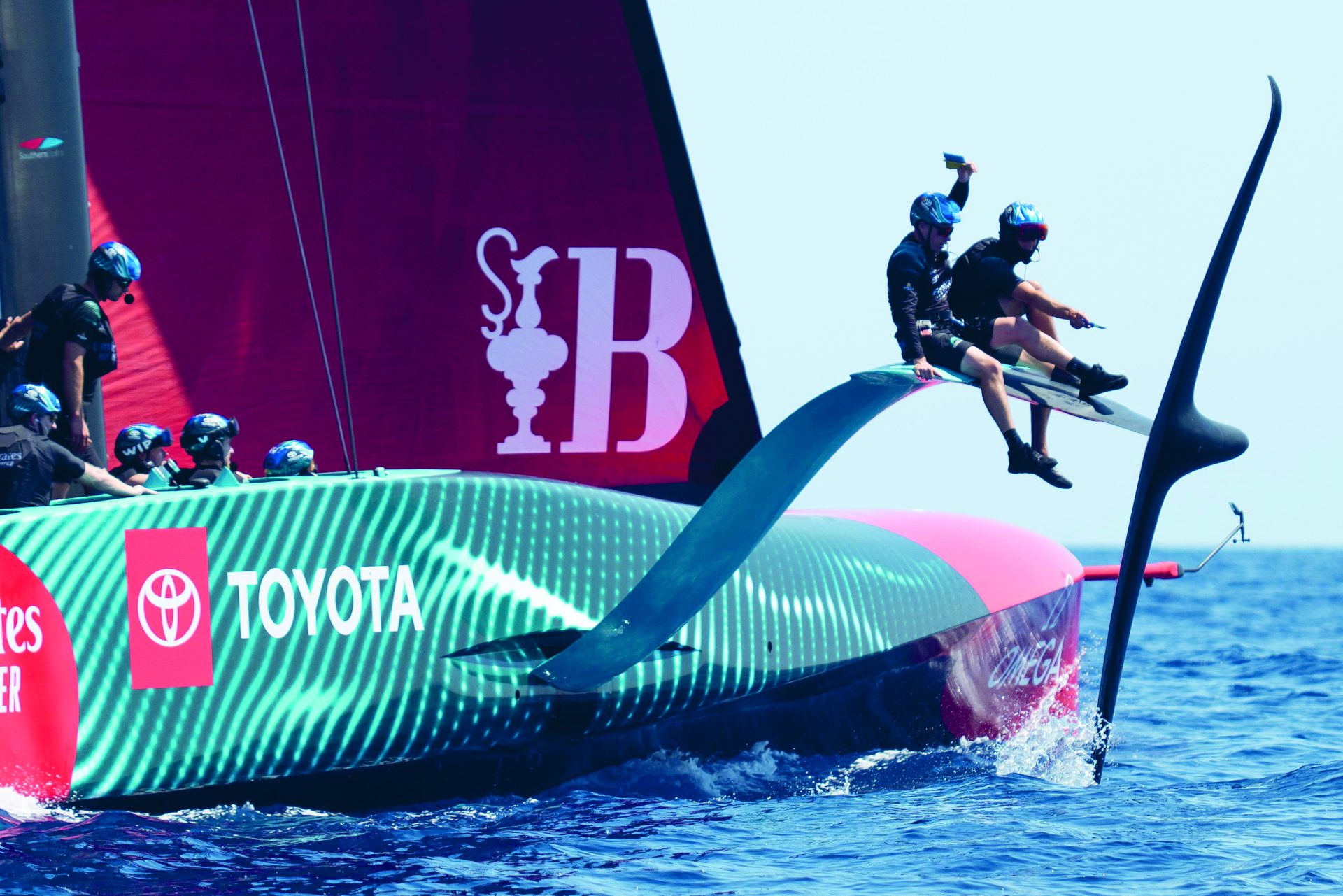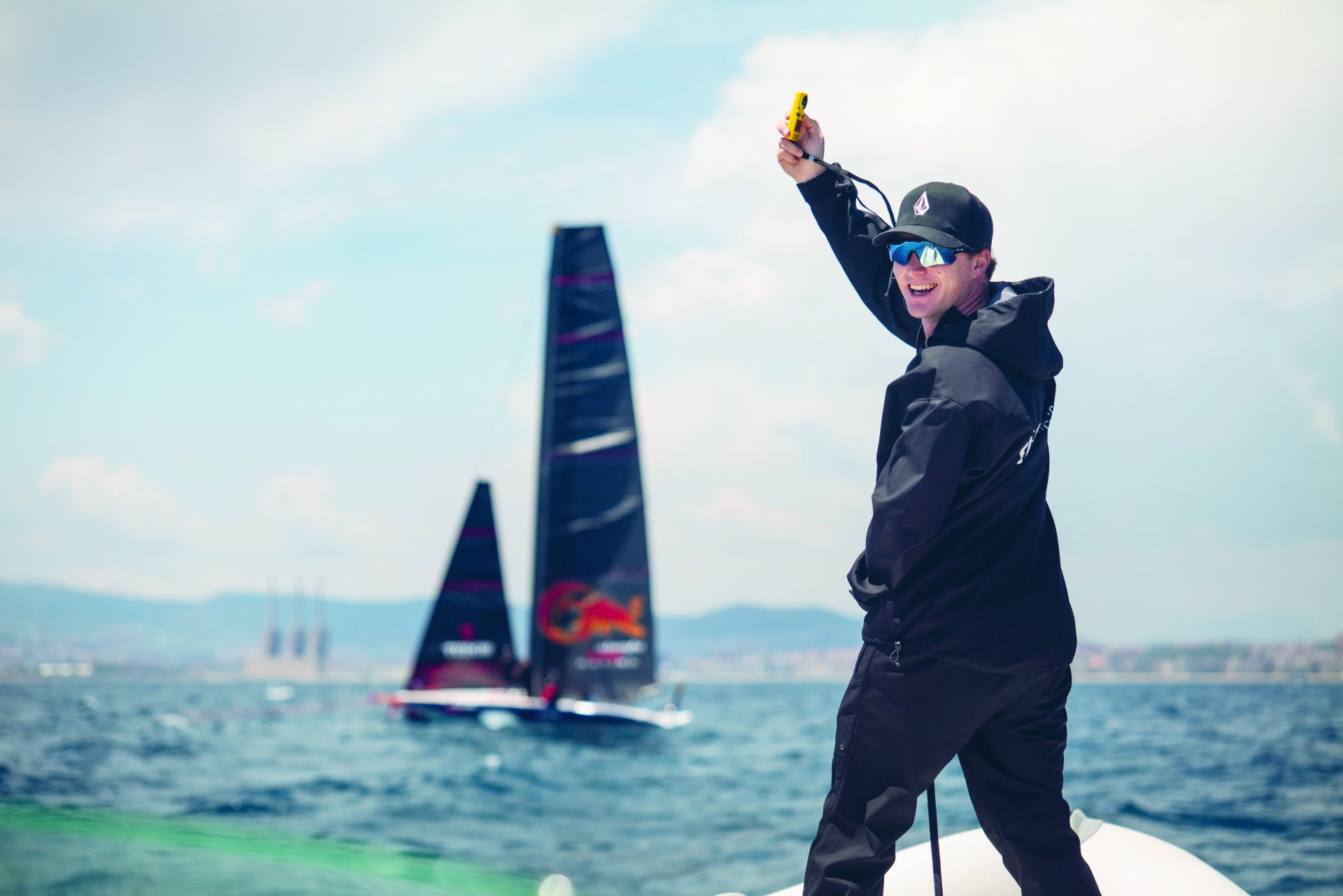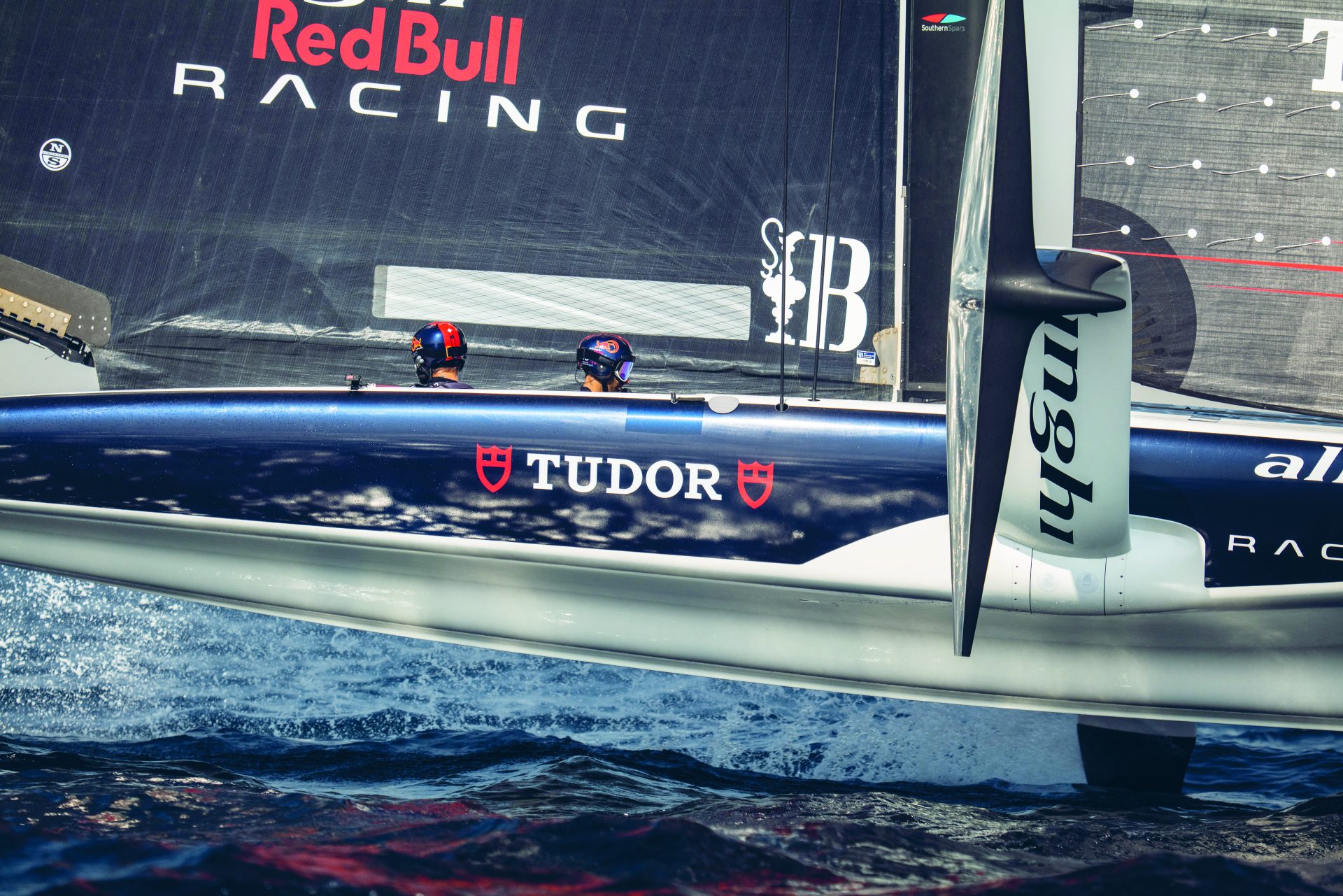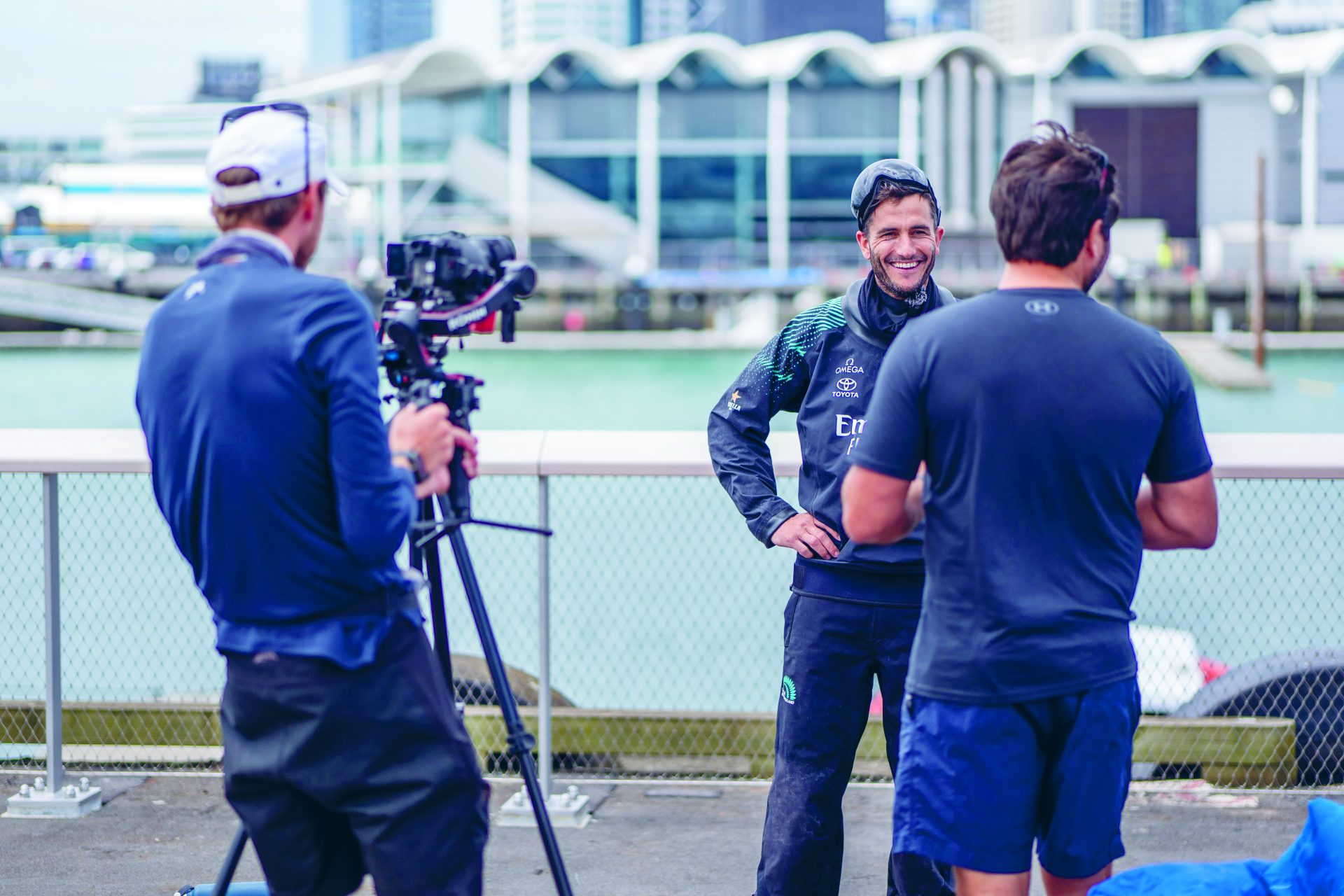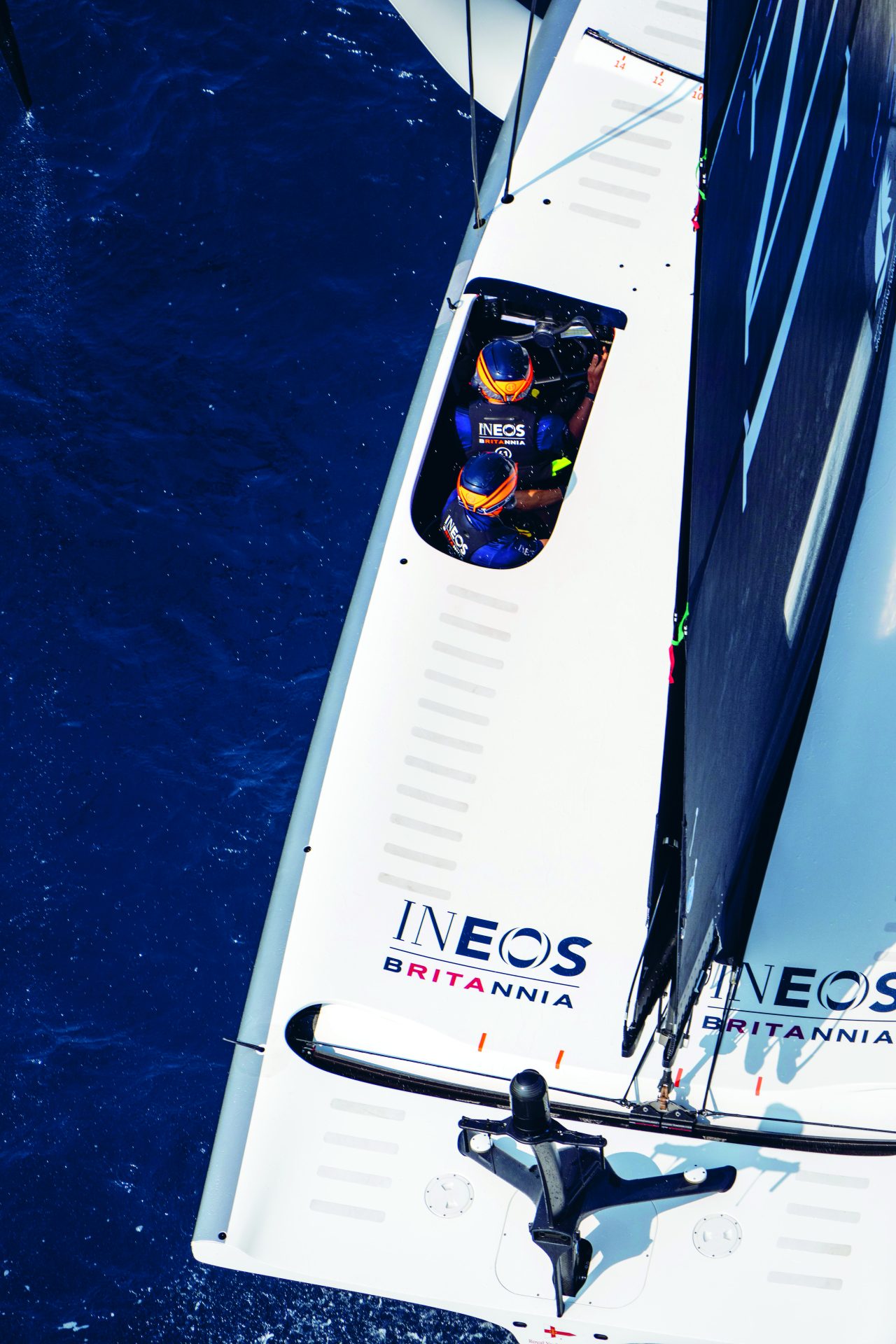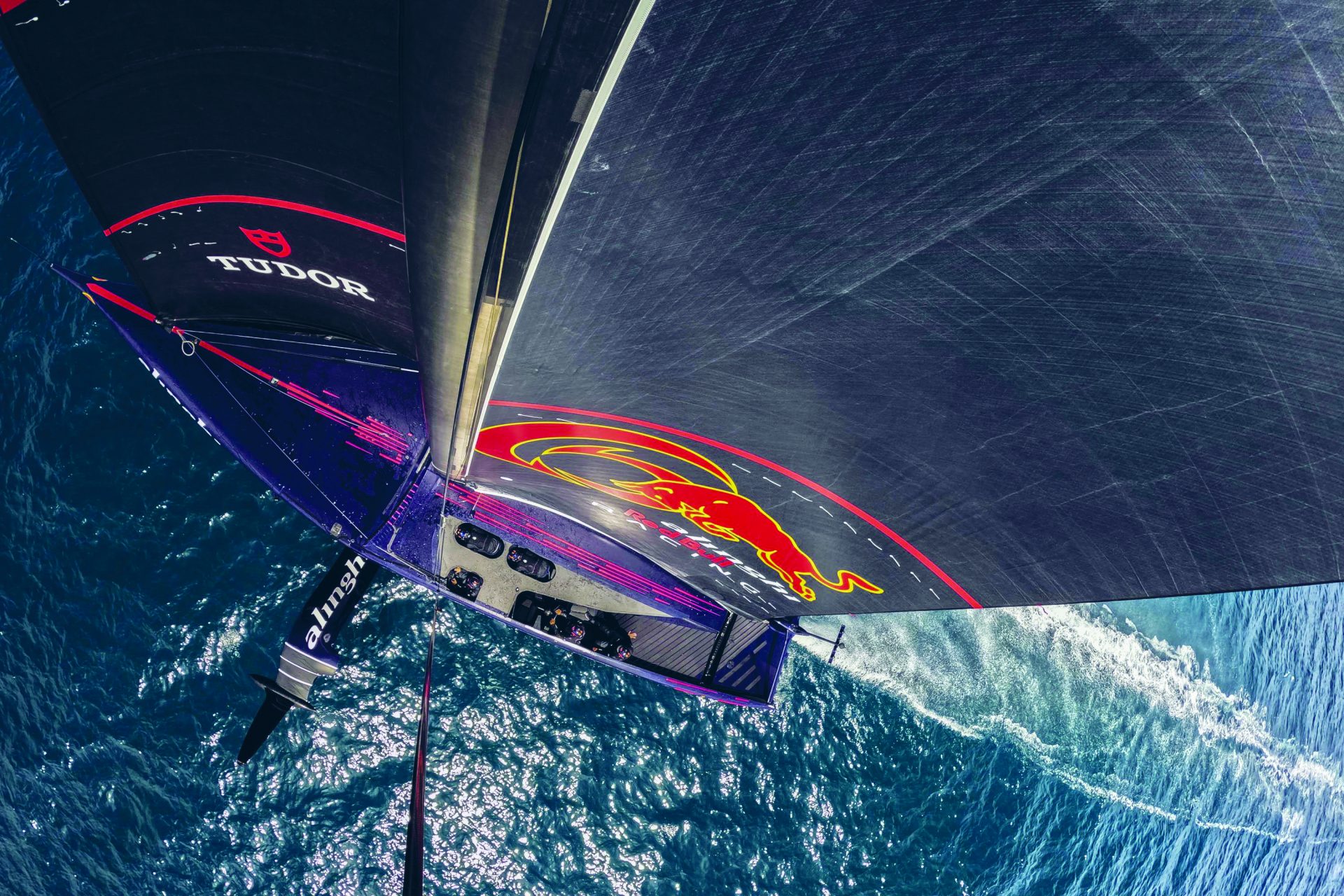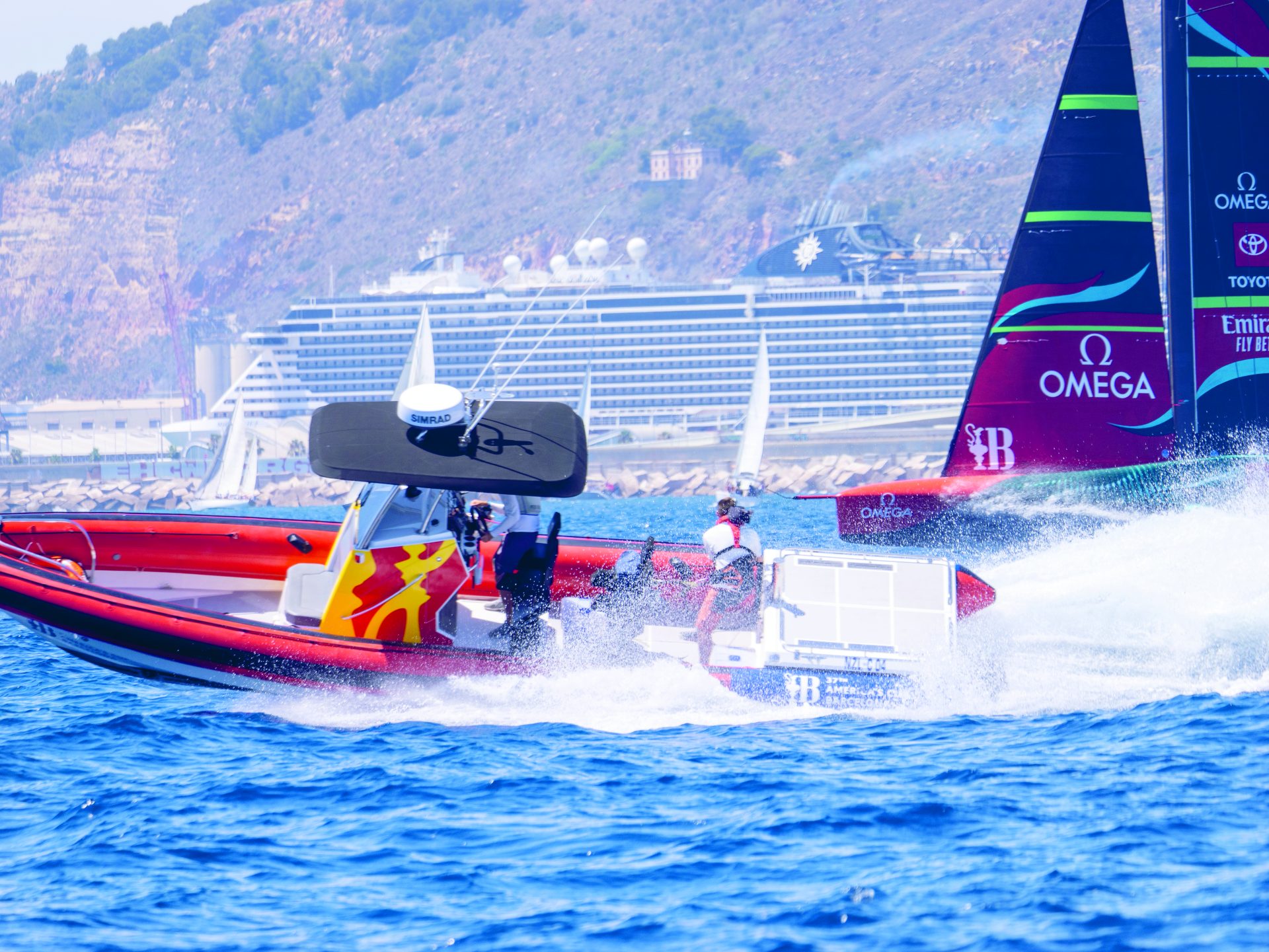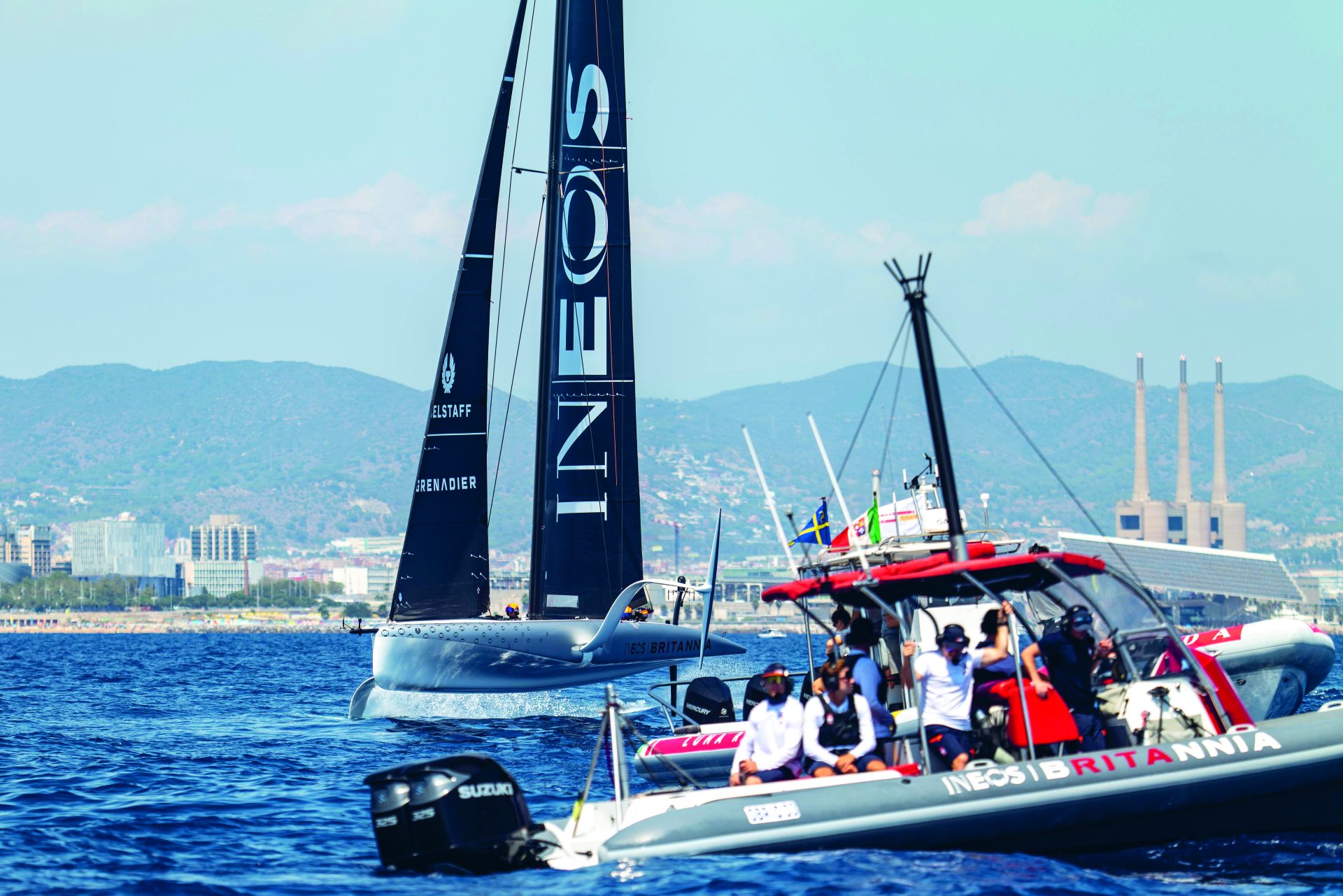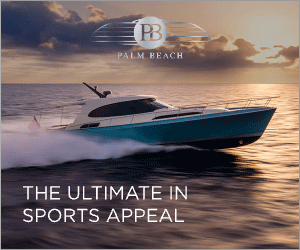AC75 – the spies who love them
“Nobody does it quite the way you do – why’d you have to be so good?” sang Carly Simon in the theme song to the Bond movie The Spy Who Loved Me. But, as the next America’s Cup starts to kick into gear, Rebecca Hayter notes the traditional team spies have been firmly replaced with a new obsession – recon.
Written by Justin Busuttil
Photography by Alex Carabi
24 June 2024
Ultimately, it was the 36th America’s Cup in Auckland that ended the spy games. With the first two world-series events cancelled due to COVID, all teams were ultra-desperate for intel. Teams were sending crews to locations around the world to spy on other teams while they were training – including Down Under to follow Emirates Team New Zealand (ETNZ).
As ETNZ’s Ray Davies says, it was getting out of hand. “We’d have three different groups of recon following us at times in Auckland, which was kind of ridiculous,” he told Tom Morris of Mozzy Sails. “It’s a big fuel burn.”
Expensive, frustrating – and dangerous. Three independent and determined RIBs in pursuit of a foiling monohull that was fast and hard to predict. There were incidents. No-one wanted to see an AC75 foiling arm colliding with a RIB, but Davies says, “We definitely had a few moments last time.
“It was pretty challenging in those short race-course areas to know if the [training] boat was suddenly going to bear away and head off downwind. Generally, if you’re reconning, you’re following a boat upwind.
“You stay to leeward so the boat can always tack off at any time, but then you tend to be in a position where as soon as they do bear away – you’re right in their line of fire.
“Then, on the flip side, when you’re following someone downwind, you’d be on their windward side so they can always gybe away – then next thing, they turn up and come at you.”
The solution, which was conceived by ETNZ Chief Designer Dan Bernasconi, represents a cultural U-turn in the America’s Cup. All teams are to share information. Enter the AC37 Joint Reconnaissance Program: recon for short. They don’t even call it spying any more.
“There will be no more grainy images shot from miles away,” Bernasconi says. “This will be the most accessible America’s Cup for fans around the world, and the development picture that will be painted will be compelling, relevant and fascinating.”
Forget Hollywood. Recon movies are the new box-office hit, at least in the America’s Cup bases that is. Each team has appointed a recon administrator who sits on the Recon Management Panel. Known colloquially as the Spy Masters, they meet regularly over Zoom to discuss issues surrounding personnel and operations.
New Zealander Rodney Ardern is recon administrator at Alinghi Red Bull Racing and admits it’s a strange dynamic to welcome a recon team to an America’s Cup base. “It’s difficult, and it took a while to make people understand they’re nice guys. They’re there every day and they’re chatty,” he says. “but at the end of the day, they’re working for the opposition, so you have to be a bit careful what you say around the place.”
Each team supplies a chase boat for the recon team of RIB driver and videographer/photographer selected by the other syndicates. “Some guys are better than others,” Ardern says. “They’ve got a better understanding of the boats and what we might be trying to do. We’ve got a young naval architect, Justin Busuttil, who’s super-interested in the foiling stuff and has done foiling projects on powerboats. He knows a lot.”
Photographer Alex Carabi from Spain is also vastly experienced in yachting, but Ardern says, “Having an even level across all the recon teams is virtually impossible.”
Recon is not always as exciting as it sounds. Recon teams record tacks and gybes, percentage of foiling time, wind range and angle, upwind/downwind VMG (velocity made good) and high and slow modes. At day’s end, they compile reports of data, observations, RAW photos and video, which they upload to the recon cloud, accessible by all teams 24 hours a day for internal use.
On 10 January 2024, Alex Carabi reported on Alinghi Red Bull Racing: “Stint 1 (10:55 – 11:20, 9 –12.5 knots 335° @ 10:55). The team spent three and a half hours on the water, with 85 minutes of sailing time. A total of 18 manoeuvres were observed, 89 percent of which were fully foiling.”
But it’s also a test of intrigue, and recon crews are encouraged to use initiative. They scrutinise mainsail trim, jib options and take-off speeds, comment on breakages or capsizes, and zoom in on foil arms, 3-D jib sheeting systems and micro-booms.
As Carabi reported, “The team started with long upwind and downwind stretches. Lucien Cujean [driver] was notably observed several times at the aft, watching the mainsail.”
It’s an area that all the teams are trying to understand better as it appears to give accurate micro-trim to the mid-section of the mainsail and then on up to the head of the sail in alignment with mainsail sheet pressure through the advanced double-yoke mainsheet system that the Swiss appear to have nailed.
Carabi requested an interview with Cujean to explore further. “The most important thing is to get the physics right,” Cujean said. “You need to get the boat models right, the physics right, and all the data needs to be good. If you have wrong data, you will have wrong answers, so making sure that what you use to feed the AI needs to be correct – then you can get something meaningful out of it.
“We can’t model everything, and some of the physics are still not super accurate, so we need to spend time on board with the sailing team just to make sure we’re doing the right job and they’re understanding what we try to provide, so there’s a bit of back and forth between them and us.”
And so on, as Cujean confirmed that physics plays a big part in the America’s Cup, but not a whisper about the double-yoke mainsheet system. “That’s good training,” quips Ardern.
Meanwhile, Carabi confirmed that even a high-tech camera can’t read the mind of an evasive America’s Cup expert. Photographers usually shoot around 1,000 photos per day, per team. The Spy Masters decided early on that all photos would be uploaded without editing; nothing is lost to the cutting-room floor.
The downside is that every team has to sift through several thousand photos, which runs counter to the idea that shared recon saves time. “We’re getting a lot of information but it’s not all specific to what you want,” Ardern says.
“You can be specific in asking questions to look at this or that, but that is all open forum among the teams, so if I ask to have some photos of the cunningham system taken, everyone knows that’s what we’re looking for.”
There are strict protocols for safety reasons and to aim for even quality of data among teams. At sea, the recon team must observe the distance limits outlined in the Protocol and Technical Regulations, the same as recon restrictions in recent America’s Cup campaigns.
On base, the recon crew are not allowed inside because even in mandated spying, secrets are permitted. During rollout, when the boat leaves the hangar, the recon team must remain within the recon squares painted on the ground, 25 metres from the mast placement point.
Matteo Plazzi, recon manager for Luna Rossa Prada Pirelli, says the teams can’t go out to sea or make radical changes to the boat without notifying the recon team. “This means we have to share our entire sailing program with them, but not all the information.”
Michele Melis, technical spy and boat driver for Luna Rossa Prada Pirelli, likens it to hide-and-seek. “Our job is to find out Luna Rossa’s secrets, and theirs is to keep them hidden. The important thing is to respect the rules on both sides,” he says.
But will the shared recon help produce the best AC75 version 2 boats for Barcelona? It will undoubtedly help new teams such as Alinghi Red Bull Racing and Orient Express Racing Team play catch-up in technology and technique.
“It’s probably bringing the teams closer, even just in sizing of sails or the mainsheet system, which is also where people are starting to converge,” Ardern says. “The foils, I imagine, are getting quite close.”
In the build-up to the last America’s Cup, photos by stealth could identify aspects such as W, delta and anhedral-shaped foils. This time, better quality photos will compare wing tips, surface textures and whether flaps are single or split in two. “I think they’re going to look pretty similar,” Ardern says, “but the thing with foils is you never know the exact thicknesses or the exact shapes, so there’s only so much you can take from photos.”
With only six foils allowed for development in total, foils are the leading ladies in recon screen time. The design rule for AC75 version 2 aims to assist the boat to lift in light airs. It has created a lighter boat with less crew and larger foil spans, allowing greater surface area on each 921-kilogram foil.
Over at Emirates Team New Zealand, what is Davies looking for in recon? “Form stability,” he told Mozzy Sails. “Barcelona is a venue with waves – it’s going to be really challenging to sail at times – so what are other teams doing with their hull design to allow the boat to take off in waves and be manageable when it’s windy?
“Their foils are a set length but their rudder length – you can vary that. The longer that is, the safer the boat is. It will be really interesting to see how much teams push some of those elements, which are going to be particularly tricky in Barcelona.
“Any boat we know, wind against tide, you’re going a lot slower than with the tide,” he continues. “So if you try and accelerate in displacement mode into waves, it’s particularly draggy on the hull. It will be interesting to see how teams manage the ability to take off and foil and control the boat in a sea state.”
He agrees there’s a danger of too much information. Traditionally, for example, Emirates Team New Zealand followed only one team at a time. This time, there’s data streaming in full-time from four other teams. AT ETNZ, they divvy up the tasks so that rig specialists look at rig photos; foil specialists look at the foils. The sailors want to see everything – including input devices and cockpit set-up.
“For sure, it’s a distraction,” Davies says. “It’s great fun looking at what other people are up to, ripping around and having an endless debate on whether that was a good gybe or not, and you can literally spend hours just looking at videos.
“Sailors put the big screen up in the gym and watch a bit of recon while putting in the hours on the bike,” he adds.
Another hot topic this edition will be micro-booms, which are being developed to achieve the optimum shape of the twin-skinned mainsail throughout the speed range as the mast rotates. The American Magic sailing crew got cheeky and deliberately blocked their recon team’s view when an engineer was working on the micro-boom. Rule-wise, they were sailing close to the wind as shrouding is banned.
As American Magic’s Tom Slingsby noted on a podcast with Shirley Robertson, everyone is watching ETNZ. “Obviously, beating the Kiwis is going to be unbelievably tough,” he says. “I don’t think I’ve ever seen them put something on the water where you think, we don’t even need to watch that; that’s irrelevant.
“Everything they put on the water, you’re watching and thinking, what’s the outcome of this going to be? And you’re watching the recon tapes and trying to figure out, is that faster or slower?”
Some of his questions will be answered around mid-year when the first AC75 version 2 boats are launched. Until then, all teams will be watching recon at a screen near them.
37th America’s Cup Barcelona 2024
22 August 2024
Barcelona Opening Ceremony
Final Preliminary Event
August to September
Louis Vuitton Regatta
Challenger Selection Series
26 September to 16 October
Youth and Women’s Regattas
12 to 20 October
America’s Cup Match



